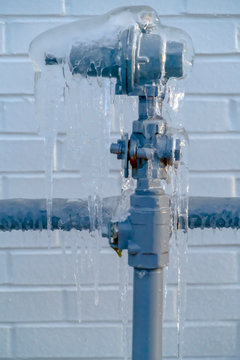Important Tips to Avoid Frozen Pipes in Cold Weather: Expert Insights
Important Tips to Avoid Frozen Pipes in Cold Weather: Expert Insights
Blog Article
Each person has their unique rationale about Helpful Tips to Prevent Frozen Pipes this Winter.

Cold weather can ruin your pipes, especially by freezing pipes. Below's how to avoid it from occurring and what to do if it does.
Intro
As temperature levels decrease, the threat of frozen pipelines rises, potentially bring about costly repair services and water damages. Comprehending just how to prevent frozen pipelines is critical for house owners in chilly climates.
Understanding Frozen Pipes
What creates pipelines to freeze?
Pipes freeze when exposed to temperatures listed below 32 ° F (0 ° C) for extended periods. As water inside the pipelines ices up, it increases, putting pressure on the pipe walls and possibly causing them to break.
Risks and damages
Icy pipelines can bring about water disturbances, home damages, and costly repair services. Burst pipes can flood homes and create extensive structural damage.
Signs of Frozen Pipeline
Determining frozen pipelines early can avoid them from breaking.
Just how to identify frozen pipelines
Seek lowered water flow from taps, uncommon odors or sounds from pipes, and visible frost on exposed pipes.
Prevention Tips
Shielding vulnerable pipelines
Wrap pipes in insulation sleeves or utilize warmth tape to secure them from freezing temperature levels. Focus on pipelines in unheated or external locations of the home.
Heating methods
Maintain indoor areas sufficiently warmed, particularly areas with plumbing. Open up cabinet doors to enable warm air to distribute around pipes under sinks.
Shielding Exterior Plumbing
Yard hose pipes and exterior taps
Detach and drain garden tubes before winter. Install frost-proof spigots or cover outdoor faucets with insulated caps.
What to Do If Your Pipes Freeze
Immediate actions to take
If you suspect frozen pipelines, keep taps open up to relieve stress as the ice melts. Use a hairdryer or towels taken in warm water to thaw pipes gradually.
Long-Term Solutions
Structural modifications
Think about rerouting pipes far from exterior walls or unheated areas. Add extra insulation to attics, cellars, and crawl spaces.
Updating insulation
Invest in premium insulation for pipes, attics, and wall surfaces. Correct insulation aids preserve regular temperature levels and decreases the threat of frozen pipes.
Conclusion
Preventing frozen pipelines calls for proactive steps and quick reactions. By understanding the causes, indications, and preventive measures, property owners can safeguard their plumbing during cold weather.
5 Ways to Prevent Frozen Pipes
Drain Outdoor Faucets and Disconnect Hoses
First, close the shut-off valve that controls the flow of water in the pipe to your outdoor faucet. Then, head outside to disconnect and drain your hose and open the outdoor faucet to allow the water to completely drain out of the line. Turn off the faucet when done. Finally, head back to the shut-off valve and drain the remaining water inside the pipe into a bucket or container. Additionally, if you have a home irrigation system, you should consider hiring an expert to clear the system of water each year.
Insulate Pipes
One of the best and most cost-effective methods for preventing frozen water pipes is to wrap your pipes with insulation. This is especially important for areas in your home that aren’t exposed to heat, such as an attic. We suggest using foam sleeves, which can typically be found at your local hardware store.
Keep Heat Running at 65
Your pipes are located inside your walls, and the temperature there is much colder than the rest of the house. To prevent your pipes from freezing, The Insurance Information Institute suggests that you keep your home heated to at least 65 degrees, even when traveling. You may want to invest in smart devices that can keep an eye on the temperature in your home while you’re away.
Leave Water Dripping
Moving water — even a small trickle — can prevent ice from forming inside your pipes. When freezing temps are imminent, start a drip of water from all faucets that serve exposed pipes. Leaving a few faucets running will also help relieve pressure inside the pipes and help prevent a rupture if the water inside freezes.
Open Cupboard Doors
Warm your kitchen and bathroom pipes by opening cupboards and vanities. You should also leave your interior doors ajar to help warm air circulate evenly throughout your home.

We are very involved in Winter Plumbing Precautions: Preventing Frozen Pipes and I'm hoping you liked the blog post. Liked our write up? Please quickly share it. Help someone else locate it. Thank-you for taking the time to read it.
Call Today Report this page